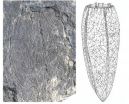(Press-News.org) Stem cell therapies work as a complement to standard treatments, potentially cutting the number of deaths after a year, suggests evidence from the latest Cochrane review: Stem cell therapy for chronic ischaemic heart disease and congestive heart failure. Taking stem cells from a patient's bone marrow and injecting them into their damaged heart may be an effective way to treat heart disease.
The new review, published today in The Cochrane Library, uses data involving 1,255 people from 23 randomised controlled trials, where all participants received standard treatments. Compared to standard treatment alone or with placebo, stem cell therapy using bone marrow cells resulted in fewer deaths due to heart disease and heart failure, reduced the likelihood of patients being readmitted to hospital, and improved heart function. However, researchers say that with much larger clinical trials underway, the findings are awaited to enable more certainty about the effects.
Dr Enca Martin-Rendon, author of the review, Cochrane Heart Review Group, and based at NHS Blood and Transplant and the University of Oxford, UK, said: "This is encouraging evidence that stem cell therapy has benefits for heart disease patients. However, it is generated from small studies and it is difficult to come to any concrete conclusions until larger clinical trials that look at longer- term effects are carried out."
Stem cell therapies are experimental treatments that are currently only available in facilities carrying out medical research. If eventually found to be effective, they might offer an alternative or complementary treatment to standard drug and surgical treatments for some patients with chronic heart disease. The procedure involves collecting stem cells from a patient's own blood or bone marrow and using them to repair damaged tissues in the patient's heart and arteries.
Although within the first year there were no clear benefits of stem cell therapy over standard treatment alone, when longer term data were analysed a year or more later about 3 per cent of people treated with their stem cells had died compared with 15 per cent of people in the control groups. Hospital readmissions were reduced to 2 in every 100 people compared to 9 in the control group, and adverse effects were rare.
Dr Martin-Rendon continued, "It isn't clear which types of stem cells work best or why stem cell therapies seem to work for some people but not for others. We need to find out what's different in the people who aren't responding well to these treatments as it might then be possible to tailor therapies to these patients, so that they work better."
Dr David Tovey, Editor-in-Chief, Cochrane, said: "This review should help to raise awareness of the potential of stem cell therapy to improve patient outcomes, but it also demonstrates the importance of recognising the uncertainty of initial findings and the need for further research. A Cochrane review aims to analyse all available data to give a clear picture of what the evidence shows. Ensuring health decision makers, health professionals and the general public has access to up-to-date, relevant evidence research will help to raise awareness of the effectiveness of treatments and medications and therefore improve health care."
INFORMATION:
For more information, read the review in The Cochrane Library.
Stem cell therapies look promising for heart disease
2014-04-29
ELSE PRESS RELEASES FROM THIS DATE:
Microfluidic technology reveals potential biomarker for early pancreatic cancer
2014-04-29
ANN ARBOR, Mich. – Cancer cells are on the move in the bloodstream in the very early stage of pancreatic cancer, and can be detected before cancer is diagnosed, according to research by the University of Michigan Health System.
In a study of 51 patients, researchers used a state-of-the art microfluidic device to capture circulating pancreas epithelial cells in 33 percent of patients with early pancreatic lesions and no clinical diagnosis of cancer.
The findings, published in Gastroenterology, suggest that circulating pancreas cells (CPCs) seed the bloodstream before ...
Coral reefs provide potent new anti-HIV proteins
2014-04-29
SAN DIEGO (April 29, 2014) – Researchers have discovered a new class of proteins capable of blocking the HIV virus from penetrating T-cells, raising hope that the proteins could be adapted for use in gels or sexual lubricants to provide a potent barrier against HIV infection.
The proteins, called cnidarins, were found in a feathery coral collected in waters off Australia's northern coast. Researchers zeroed in on the proteins after screening thousands of natural product extracts in a biorepository maintained by the National Cancer Institute.
"It's always thrilling when ...
NCI, NCRI and EORTC outline risk-assessment approach for biomarker-driven cancer clinical trials
2014-04-29
In an article published in The Lancet Oncology, an NCI (US National Cancer Institute), NCRI (UK National Cancer Research Institute), and EORTC (European Organisation for Research and Treatment of Cancer) working group outline a practical risk-management approach for effective integration of biomarkers into cancer clinical trials. Their work provides the international community with a set of common principles by which biomarkers can be integrated into clinical trials, exchange of data can be facilitated, quality promoted, and research accelerated while simultaneously respecting ...
Mobile users may not buy into instant gratification cues
2014-04-29
Gimmicky contest ads and flashy free-prize messages may be an instant turnoff for mobile users, according to Penn State researchers.
In a study, a tempting offer of a free prize drawing for registering on a mobile website led users to distrust the site, said S. Shyam Sundar, Distinguished Professor of Communications and co-director of the Media Effects Research Laboratory.
Sundar said that in an increasingly information-loaded world, people tend to lean on cues, such as icons and messages, for decision-making shortcuts, called heuristics. However, some cues may elicit ...
Widespread tetraradial symmetry among early fossil sponges
2014-04-29
Sponges are usually considered to be the oldest living animals, having evolved before all other groups. The simplicity of their body structure and tissue organization has for many years made them candidates for the ancestral group of animals, and they have long been regarded as our best illustration of what the earliest animals would have looked like. This has been supported by genetic analyses, which suggest that sponges branched from other animals a very long time ago, deep in the Precambrian. Until recently, most zoologists believed that sponges were little more advanced ...
Dampening of positive feelings found to predict postpartum depressive symptoms
2014-04-29
A new KU Leuven study shows for the first time that the dampening or suppression of positive emotions plays an important role in the development of postpartum depression. This has implications for the treatment of depressed mothers.
We often forget that depression is characterised by both negative feelings and a lack of positive feelings. Researchers suspect that this may have to do with the way depression-prone individuals deal with positive or happy feelings. These individuals downplay or suppress positive feelings through a cognitive response style called dampening. ...
New research shows increasing ocean temperatures affecting coral reefs
2014-04-29
FORT LAUDERDALE-DAVIE, Fla. – It seems that coral reefs are experiencing something their human counterparts have been for years – a shrinking "empty nest" syndrome.
That's right – researchers have found that increasing ocean temperatures due to climate change will soon see reefs retaining and nurturing more of their own coral larvae, leaving large reef systems less interconnected.
The study brought together an international group of researchers from NSU's Oceanographic Center; the Australian Research Council Centre of Excellence for Coral Reef Studies and the School ...
Stress research in therapy dogs reveals animals' needs
2014-04-29
So-called animal-assisted therapy is being used increasingly often to treat physical and mental diseases in man. "For stressed persons, animals may serve as "social ice-breakers" and thus motivate them to enroll in therapy in the first place," says Lisa Maria Glenk, the lead author of the study. Scientific investigations on animal-assisted therapy do exist, but these have been largely confined to studying the effects of such therapy on man.
Lisa Maria Glenk conducts research at the Department of Comparative Medicine at Messerli Research Institute. She is a pioneer in ...
Drug monitoring information improves regimen adherence, Carnegie Mellon researchers say
2014-04-29
PITTSBURGH—Most people want to take mediations as prescribed, even if they sometimes need a little help remembering. For them, an automated system that monitors drug taking and provides feedback after the fact may be more useful than one that nags people when it is time to take a pill, researchers at Carnegie Mellon University say.
In a 10-month study of such a system in the homes of older adults with chronic health problems, the researchers found that adherence to a medication regimen improved when people had ready access to a digital display of their medication-taking ...
'Race, risk and behaviors: A type 2 diabetes update'
2014-04-29
Philadelphia, April 29, 2014 – Clinical Therapeutics features a special report in its April issue focusing primarily on the behavioral issues associated with patients' self-management of type 2 diabetes. "Diabetes, perhaps more so than any other chronic disease, requires people to significantly modify their behaviors—sometimes in ways that are contrary to their cultural norms and backgrounds—even when they don't 'feel' sick or experience symptoms of the disease," said John G. Ryan, Dr.PH., Topic Editor for Endocrinology and Diabetes, and guest editor for the April 2014 ...



